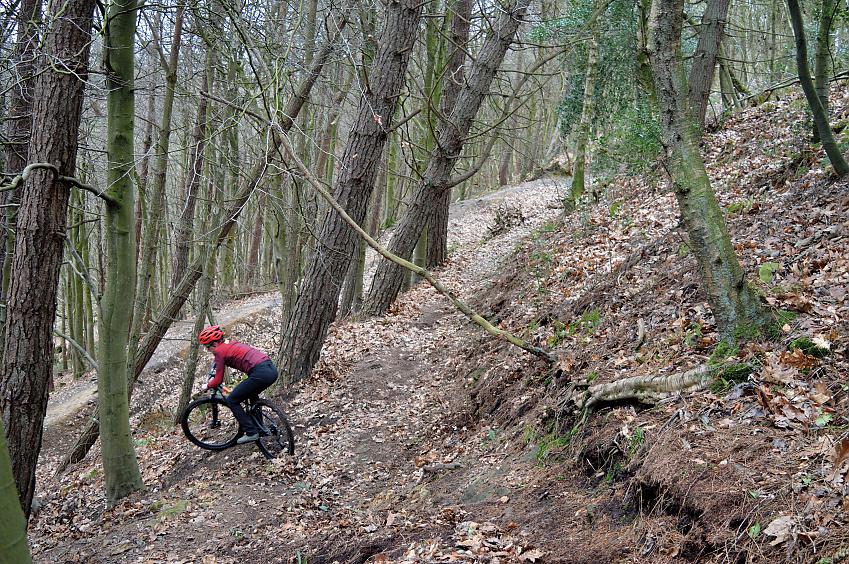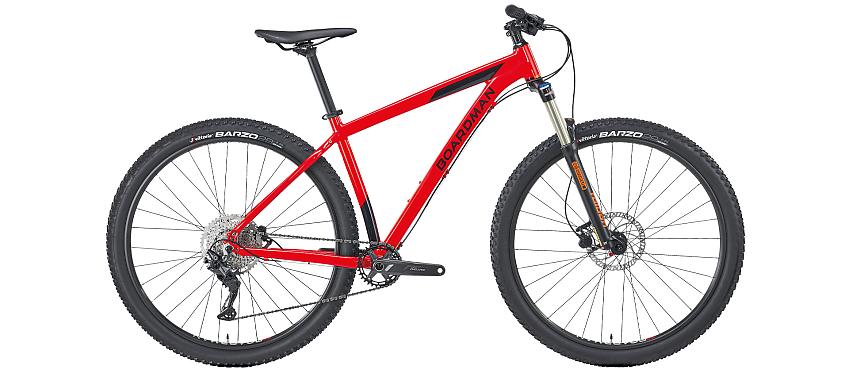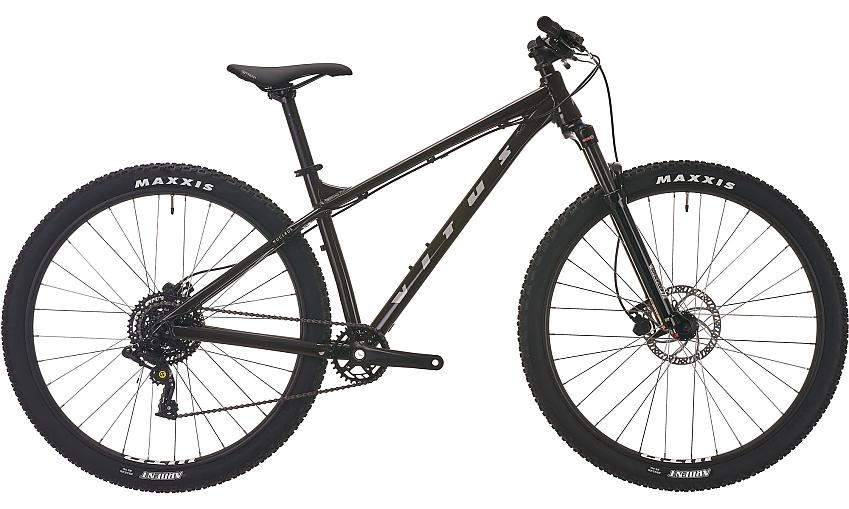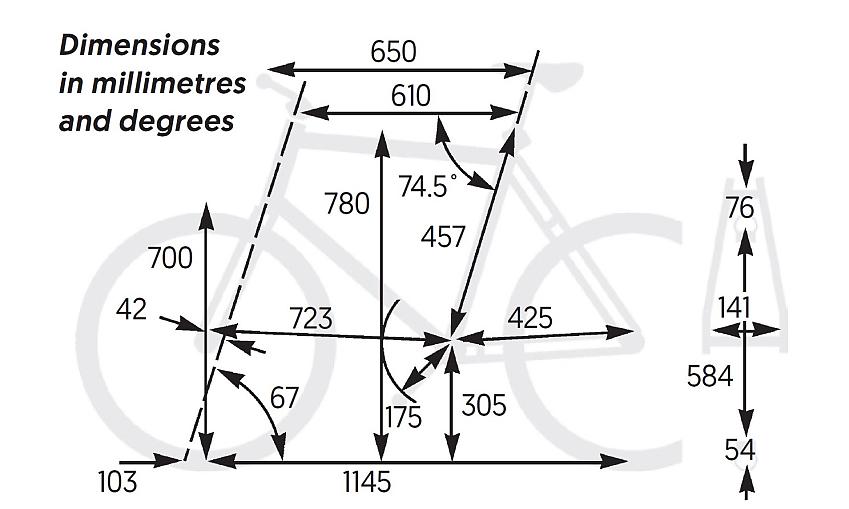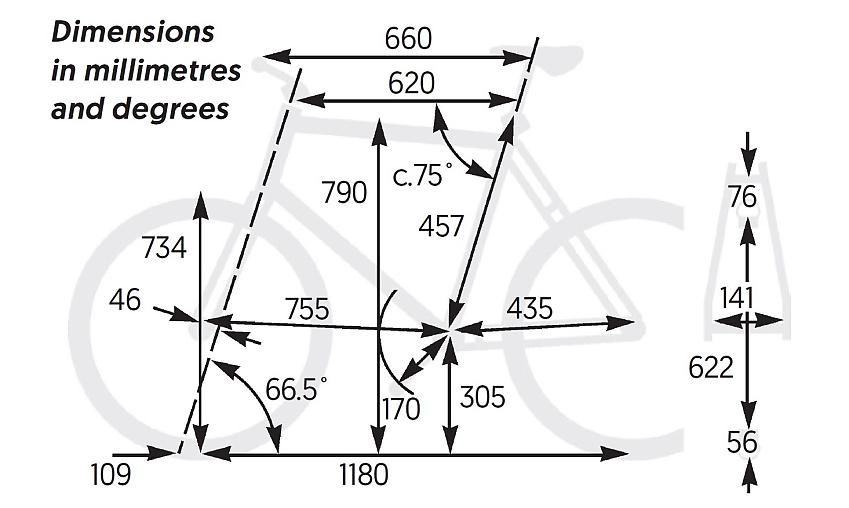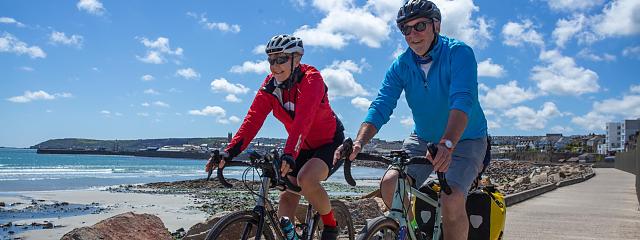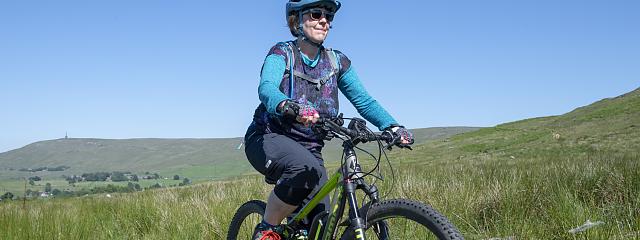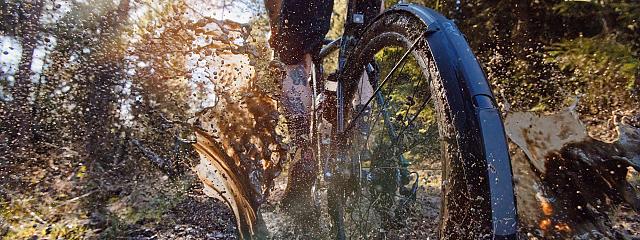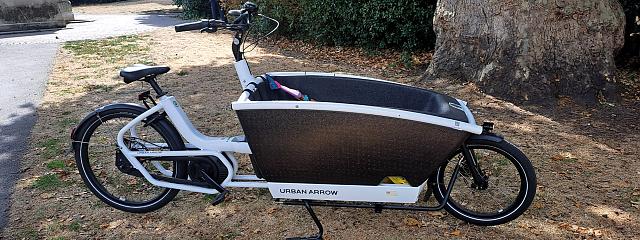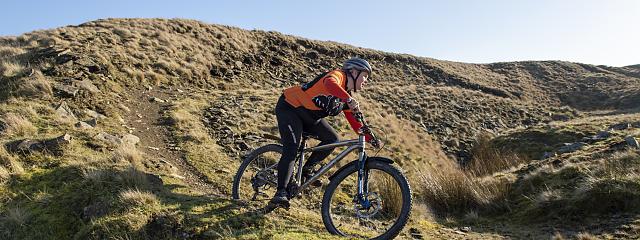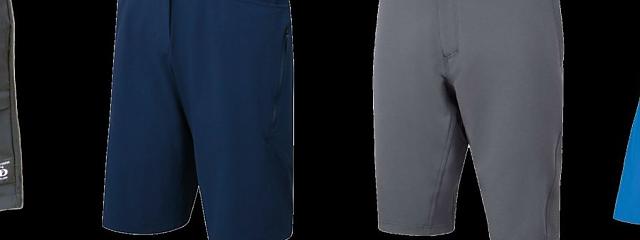
Bike test: bargain hardtail mountain bikes
Bike test: bargain hardtail mountain bikes
Even entry-level hardtail mountain bikes are becoming expensive these days. Among the big-name brands, it seems you now need to spend £900 or more to get a good one.
By ‘good’, I mean that the bike has: steering geometry that’s stable enough to cope with contemporary trails; nothing major that needs replacing; and a suspension fork that’s adjustable for both rider weight and rebound, so it absorbs bumps effectively and doesn’t simply pogo back up.
It’s the fork that’s often – and sometimes literally – the sticking point. Most budget hardtails come with unsophisticated coil-sprung forks, whose problems include overly stiff springs, limited adjustability, stiction and sometimes flexy fork stanchions. While I’d rather have a rigid fork than a cheap coil fork, the cycle industry disagrees with me: below about £900, a budget coil fork is what you’ll get.
Unless you look at superstore own brands and online retailers, where £700 can buy a hardtail with an air-sprung fork. The performance difference this offers is immediately noticeable, so much so that I only considered bikes with air forks for this test.
The review bikes are both from Halfords. The Carrera Fury is £680, the Voodoo Bizango £750. They’re sometimes discounted, and Cycling UK members get 8% off at Halfords.
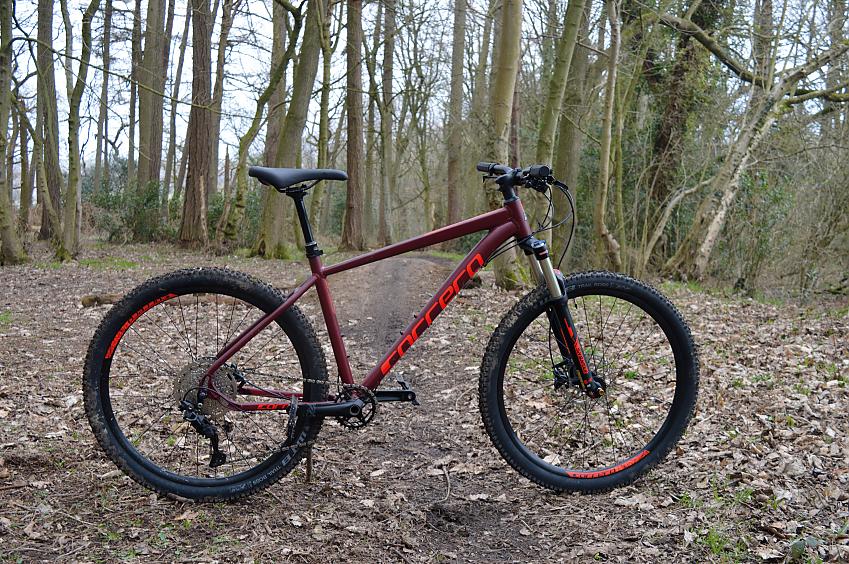
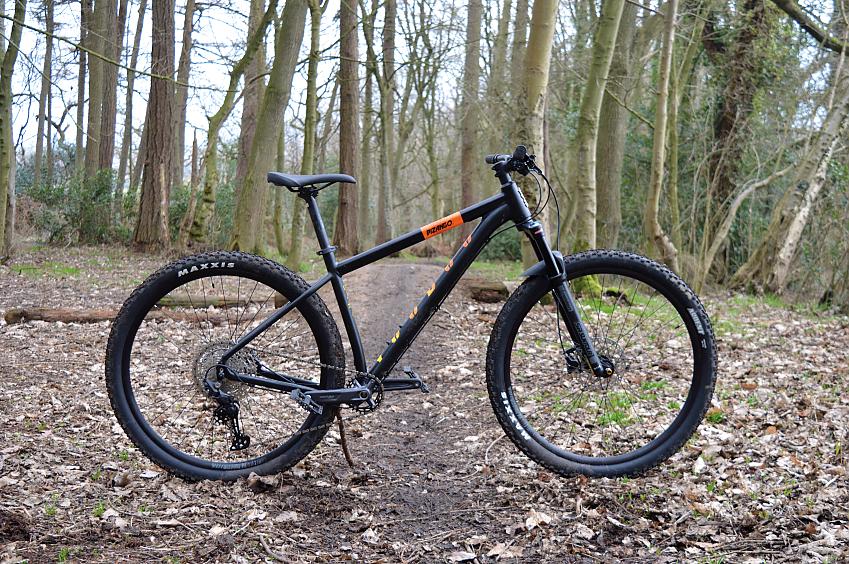
Frame & fork
Both bikes have frames TIG welded from unspecified aluminium tubing. The Voodoo’s has a longer wheelbase as it’s longer in the top tube and accommodates larger, 29in wheels. Its chainstays are only 10mm longer than the Carrera’s, however, as the seat tube is curved to enable the bigger wheel to sit closer to the bottom bracket.
In other respects the frames are similar. The head angles (67º and 66.5º) are relatively slack, which provides more stabilising trail and puts the front wheels slightly further forward, making it less likely you’ll dive over the handlebar on a descent.
Both bikes have 18in seat tubes. That used to be fairly typical for a medium-sized mountain bike but if you’re going to use a dropper seatpost – the Carrera comes with one and the Voodoo has cable routing to fit one – it’s too tall. A dropper post adds the length of its travel (usually 100mm or more), plus the depth of its collar (25mm-plus), to the bike’s minimum saddle height in the undropped position.
Initially, I received the size L Carrera Fury for testing. Halfords’ size guide suggested it for my height, and I prefer its longer reach, having ridden both M and L Furies in the past. I could barely reach the pedals with my tiptoes! So I swapped it for the size M.
You’ll see from the pictures that the dropper is as low as it will go in the frame. Though rideable, it’s still a few millimetres too high for me. I’d like to see the Carrera and the Voodoo specified with seat tubes 50mm shorter across the range.
Frame clearances are good. Either bike would take 2.4in tyres and should fit 2.6in tyres in less muddy conditions. Both bikes have so-called ‘Boost QR’ rear dropouts. This is a standard 10mm-diameter quick-release dropout that’s 141mm wide.
It’s nice to have slightly wider hub flanges, as that makes for a laterally stiffer wheel, but you don’t get the same benefit that you would with a (more expensive) screw-thru axle. Note that the Voodoo Bizango now has vertical dropouts like the Carrera; some older models (mine) had adjustable dropouts.
The head tubes of the bikes are different sizes. The Carrera’s takes a straight 1 1/8in steerer, the Voodoo’s a tapered (1 1/8in to 1 1/2in) steerer. A tapered steerer is stiffer, so you should get less fork ‘flutter’ while braking. It’s also the most common standard for better-quality suspension forks, so it’s much easier to upgrade the Voodoo’s fork than the Carrera’s.
The two forks fitted are 120mm-travel Suntour Raidon LOR models with 32mm diameter stanchions. The acronym signifies that they have adjustable rebound and hydraulic lockout; not all Raidons do. Fork adjustments are straightforward, although you will need a shock pump to set the pressure to suit your weight and riding preferences.
Both forks use a Q-Loc axle, which is Suntour’s quick-release system for thru-axles. I’d prefer a simple screw-thru but it works OK and is less fiddly than Manitou’s Hexlock. The Voodoo’s fork is taller, even though the travel is the same, as it’s designed for a 29in wheel. It’s also wider – a 110mm axle rather than 100mm – which should make for a laterally stiffer front wheel.
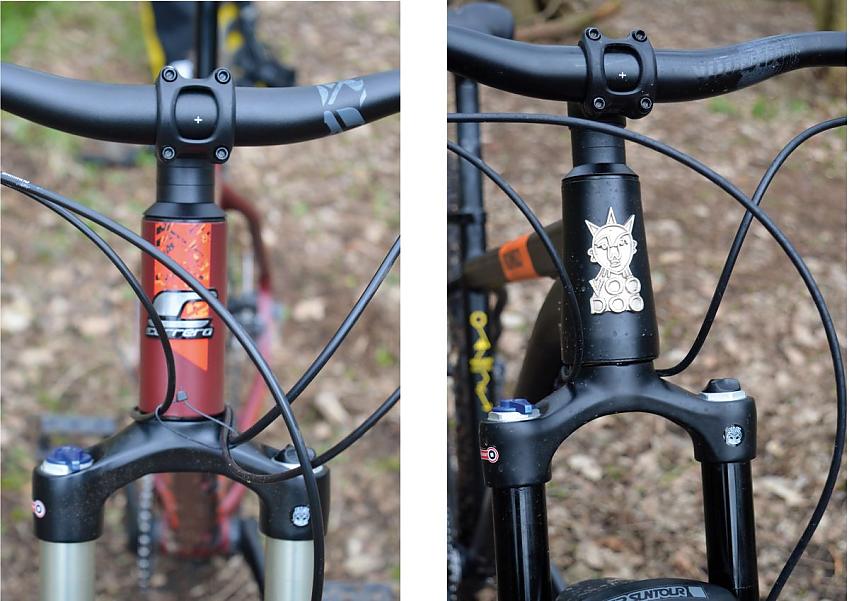
Components
Both bikes are very well specified. The Carrera’s dropper seatpost is a standout feature at this price. While it’s not from a brand I’ve heard of, it works well enough, and I was frequently glad to have it.
The 1× Shimano Deore drivetrains are similar, not identical. The Carrera Fury’s is 10-speed, with an 11-46 cassette and a 32-tooth chaining. The Voodoo Bizango’s is 11-speed, with an 11-51 cassette and a 30-tooth chainring. Factoring in the different wheels sizes, the gear ranges are about the same. I didn’t need anything higher or lower on either bike.
Longer cranks (175mm versus 170mm) on the Carrera meant a few more pedal strikes, despite the bottom bracket being the same height as the Voodoo’s. The longer cranks also compounded the problem I had with saddle height. If they’d been 170mm I wouldn’t have had to overstretch slightly at the bottom of each pedal stroke.
The Voodoo’s gear cable is fully covered from shifter to derailleur, whereas the Carrera has a bare cable underneath the down tube. That’s likely to rust and/or drag dirt into the interrupted cable outers in UK conditions, which will degrade the shifting performance.
Gear shifts were fine during the test; both bikes had been set up properly before being shipped. The only downside was the fact that the Carrera’s cables and hoses ought to have been cut shorter. I added a cable tie to keep them in check.
I didn’t really notice the Altus-level Shimano hydraulic disc brakes during the test. They just worked. For a budget brake, that’s praise. It helps that they each have a 180mm rotor up front to improve the stopping power.
Both bikes have decent off-road tyres, unlike some budget mountain bikes. Wider tyres that could be run softer would help bump absorption and climbing traction but an upgrade could be delayed until funds allowed. Note that the rims and Maxxis Ardent tyres of the Voodoo are tubeless ready. The Carrera’s rims and WTB Trail Boss tyres are not.
Ride
With sensible steering geometry, wide bars and forks that do a decent job of tracking the trail surface instead of ricocheting off it, both of these bikes handle well. You could confidently ride either around any trail centre red route and many black routes. Suntour Raidons may not be plush but they provide effective suspension travel for a wide weight range of riders.
The rolling performance and climbing traction of the Voodoo’s 29er wheels are straight up better than the 27.5 wheels of the Carrera. I spun out and stalled on the Carrera on a couple of climbs I easily made on the Voodoo, and I lost less time on descents to my full-suspension riding friend when riding the bigger-wheeled Voodoo.
It’s nice to see both bikes fitted with wide (760mm and 780mm) bars and short (45mm) stems. Having your hands further apart provides more steering leverage, and thus control, in any technical sections. I found the Carrera a little short in the frame for such a short stem. Given that I don’t fit the size L, I’d have to fit a longer (60-80mm stem) to correct this.
To get the saddle height right, meanwhile, I’d have to fit 170mm cranks or swap the dropper post for one with 100mm travel.
The Voodoo is a little longer in the top tube and feels longer still because of its wider bar. This makes you lean forward more for a given reach because your arms are splayed wider.
The contact points of the bikes are a mixed bag. The saddles are fine. The grips are uncomfortable, especially the hexagonal ones on the Carrera. The alloy pedals provided aren’t terrible but I switched them for my own grippier ones to prevent any foot-slipping accidents.
Verdict
With its effective air fork, dropper post, short stem, wide bar and good-quality brakes and gears, the Carrera’s spec reads like a wishlist. To get the most from these components, however, it really wants a different frame – one that retains its 67º head angle but is longer in the top tube and shorter in the seat tube.
Try it for size, though: if it fits you better than it does me, it’s a bargain. Upgrade potential is limited so it’s best seen as a one-stop-shop starter bike that you won’t subsequently spend money on.
By contrast, the Voodoo could be a keeper. Upgrades such as a Brand X Ascend dropper post, a tubeless conversion and a Maxxis Minion DHF front tyre would be money well spent.
As it stands, although it lacks the dropper post of the cheaper Carrera, it is in all other respects that bit better. A better fit (for me). A wider bar. Smoother-shifting gears. And more assured handling, thanks to slightly more trail, a longer wheelbase and bigger wheels that roll better over roots and rocks.
Other options
Boardman MHT 8.6, £635
29er hardtail with a 120mm Raidon fork, 1×10 Deore drivetrain and a 68º head angle. A new version is due soon; the existing one is discounted to £571.50.
Vitus Nucleus 29 VR, £649.99
Another 29er, this time with a 100mm Suntour XCR32 air fork, 1×8 Box Four drivetrain, Clarks M2 hydraulic discs, Maxxis Ardent tyres and a 67º head angle.
First published in Cycle magazine, April/May 2023 issue. All information correct at time of publishing.
Our test promise
At Cycling UK and Cycle magazine, we are proudly independent. There’s no pressure to please advertisers as we’re funded by our members. Our product reviews aren’t press releases; they’re written by experienced cyclists after thorough testing.
Tech specs
Carrera Fury
Price: £680
Sizes: S, M (tested), L
Weight: 13.7kg/30.1lb (no pedals)
Frame & fork: butted aluminium frame with 1 1/8in threadless headset, 73mm threaded bottom bracket, 141mm QR dropouts and fittings for dropper cable, mudguard, three-point rear rack, two bottles. Suntour Raidon LOR air fork with 120mm travel and 15×100mm Q-Loc thru-axle.
Wheels: 54-584 WTB Trail Boss tyres, Carrera double-wall aluminium rims, 32×3 spokes, unbranded 15×100 aluminium front hub, unbranded 141mm QR rear hub.
Transmission: alloy pedals (not used), 175mm Prowheel chainset with 32t narrow-wide chainring, Hollowtech II-style bottom bracket, KMC X10 10-speed chain, 11-46t Shimano CS-HG500 10-speed cassette. Shimano Deore 10-speed shifter and rear derailleur. Ten ratios, 19-80in.
Braking: Shimano MT200 hydraulic disc brakes with 180mm front and 160mm rear rotors.
Steering & seating: Carrera MTB hexagonal grips, 760×31.8mm Carrera aluminium riser bar, 45mm×3º Carrera aluminium stem, 1 1/8in semi-integrated threadless headset. Carrera Memory Foam MTB saddle, 31.6mm Satori Satoro Pro dropper seatpost with 125mm travel, 34.9mm seatpost clamp.
Voodoo Bizango
Price: £750
Sizes: S, M, L, XL
Weight: 12.95kg/28.5lb (no pedals)
Frame & fork: butted aluminium frame with 1 1/8-1 1/2in tapered headset, 73mm threaded bottom bracket, 141mm QR rear dropouts and fittings for dropper seatpost, mudguards (lower eyelets only) and two bottles. Suntour Raidon 32 Boost LOR air fork with 120mm travel and 15×110mm Q-Loc thru-axle.
Wheels: 54-622 Maxxis Ardent tyres, tubeless-ready double-wall aluminium rims, 32×3 spokes, 15×110mm aluminium thru-axle front hub, 141mm QR aluminium rear hub.
Transmission: alloy pedals (not used), 170mm Shimano Deore FD-M5100 chainset with 30t narrowwide chainring, Shimano Deore external bottom bracket, KMC X11 11-speed chain, 11-51t Shimano CS-M5100 cassette. Shimano Deore M5100 shifter and rear derailleur. 11 ratio, 17-79in.
Braking: Shimano MT201 hydraulic disc brakes with 180mm front and 160mm rear rotors.
Steering & seating: lock-on grips, 780×31.8mm aluminium riser bar, 45mm×3º aluminium stem, tapered threadless headset. WTB Volt saddle, 31.6×350mm aluminium seatpost, 34.9mm seatpost clamp.






